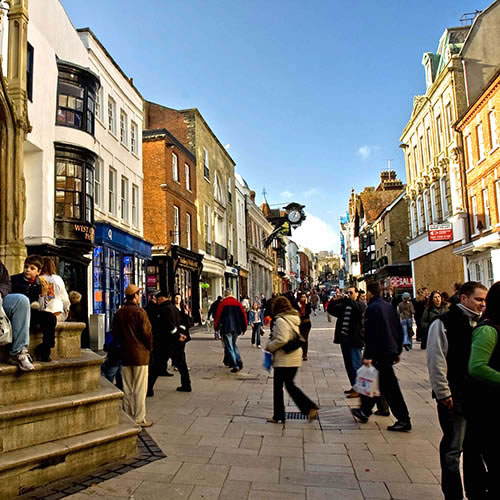National shop vacancy rates improved 0.2 per cent in the second half of 2015, compared with the first half, with 800 previously vacant units being reoccupied.
The Restructure and Recovery report from the Local Data Company (LDC) looked at 2,179 towns, shopping centres and retail parks. It found that the total number of vacant premises in the second half of 2015 was 47,597, down 1,994 compared with the first half of the year.
Wales still has the highest national vacancy rate at 14.6 per cent, followed by Scotland (11.7 per cent) and then England (11.3 per cent). However, Wales saw the biggest fall in vacancy rates (0.4 per cent) in the second half of the year.
The best performing region remained London at 7.6 per cent, while the worst performing region was the North-East, with a vacancy rate of 16.7 per cent.
Shopping centres continue to have the highest overall vacancy rate at 14.1 per cent, which was 0.7 per cent lower than the first half. This was followed by town centres at 11.5 per cent and retail parks at 6.2 per cent.
Although retail parks were the best performer overall, they saw stark regional differences, with the highest retail park vacancy in the North-West (9.1 per cent) and the lowest in the East Midlands (3.8 per cent).
In the second half of 2015, the number of units that have been unoccupied for more than three years in town centres increased by 28.6 per cent to a total of 12,321 units.
According to the report, 25 of the 40 worst performing town centres in 2010 had improved their shop vacancy rate over the past five years (57.5 per cent in H1 2015). The town centre that saw the biggest improvement was Brixton in south London, seeing a 12.2 per cent drop in its shop vacancy rate between 2010 and 2015. Preston in Lancashire saw the biggest increase in the past five years, with its vacancy rate increasing 7.2 per cent.
“2015 was an encouraging year for the overall ‘health’ of our town centres, retail parks and shopping centres,” said LDC director Matthew Hopkinson. “There was evidence of recovery as a result of stronger consumer confidence and early signs of restructuring and regeneration having a positive impact.
“While high streets and shopping centres have seen solid improvements in their occupancy rates, it is the retail parks that really stand out as the destination of choice for many retailers. Retail parks are bigger and more diverse than ever before, with retail and leisure offerings, free parking and better logistical structures for retailers in the world of Total Retail – in-store, online, mobile and click and collect.
“As I have stressed in the past, there are wide differences by location and asset class up and down the country so for a number of towns and shopping centres times are still very challenging. Many of these centres are north of the Watford Gap and this persistence of vacancy comes out clearly when we look at the key location health indicator of how long shops lie empty. For the North East, North West and West Midlands, they all have significant issues in the number of long-term vacant units – there over six per cent of their total stock has been vacant for more than three years, while in Greater London the number is just above two per cent.
“2016 has the potential to be another year of improvement if employment and wages continue to rise and interest rates and inflation remain low. The fact remains, however, that Britain has too many shops.”


